BULGARIA – House of Saxe-Coburg and Gotha
HOUSE OF SAXE-COBURG AND GOTHA
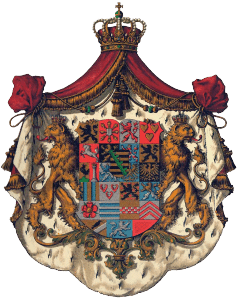
The House of Saxe-Coburg and Gotha (in German, Haus Sachsen Coburg und Gotha) is a German dynasty, in particular, the line of the Saxon House of Wettin that ruled the Ernestine duchies, including the duchy of Saxe-Coburg and Gotha.
Although the House of Coburg reaches back in history to the 1400s, we start our family tree in the latter half of the 18th century with Franz Friedrich Anton, the sixth Duke of Saxe-Coburg-Saalfeld (from 1826 on, the house was called Saxe-Coburg and Gotha). Through the first marriage of Ernst, Franz Anton’s eldest son, to Luise Princess of Saxe-Gotha-Altenburg, the house acquired considerably more territory and importance. The descendants of Franz Friedrich Anton were at the top of several European monarchies. Members of their successor families are currently heads of government in many countries: Belgium through the descendants of King Léopold I, and in the Commonwealth realm through the descendants of Prince Consort Albert. Due to anti-German sentiment in the United Kingdom during World War I, King George V of the United Kingdom and Ireland changed the name of his branch from “Saxe-Coburg and Gotha” to “Windsor” in 1917. The same happened in Belgium, where it became “van België” or “de Belgique.”
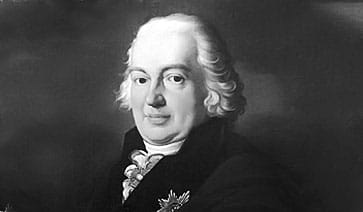
Franz Friedrich Anton
Duke of Saxe-Coburg-Saalfeld, Duke of Saxony (since 1800)
(Coburg, 15 July 1750 – Coburg, 9 December 1806)
Franz Friedrich Anton had to take over a practically ruined duchy. But he was a very talented man and – despite of his lack of money – started to collect engravings of the most excelling artists between the 15th and 18th century, thus founding the Coburg Collection of Graphics with its today’s 220.000 pieces of art. He is a patrilinear ancestor of Queen Elizabeth II of the United Kingdom of Great Britain and Northern Ireland, King Philippe of the Belgians and former tsar Simeon II (1943 – 1946 during the monarchy) and prime minister of Bulgaria (between 2001 and 2005).
Hereditary Prince of Saxe-Coburg-Saalfeld (till 1800)
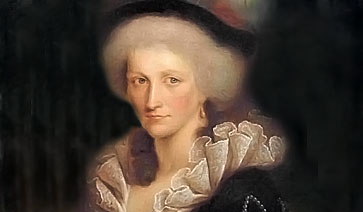
Auguste Karoline Sophie
Duchess of Saxe-Coburg-Saalfeld, Duchess of Saxony (since 1800)
(Saalburg-Ebersdorf, 19 January 1757 – Coburg, 16 November 1831)
Auguste had ten children, born between 1778 and 1792. One was stillborn and two died during their childhood. The other seven were married to European high nobility and these marriages were arranged under strong personal care. Auguste was the maternal grandmother of Queen Victoria of the United Kingdom and Ireland and the paternal grandmother of Albert, Prince Consort.
Princess Reuss
Princess of Ebersdorf
Princess of Saxe-Coburg-Saalfeld, Duchess of Saxony (since 1777)
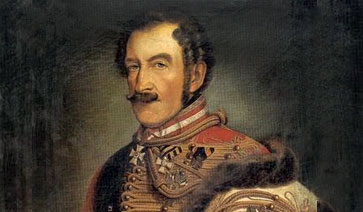
Ferdinand Georg August
Prince of Saxe-Coburg (Koháry), Duke of Saxony (since 1826)
6(Coburg, 28 March 1785 – Vienna, 27 August 1851)
Ferdinand Georg August is the second son of Franz Friedrich Anton, Duke of Saxe-Coburg-Saalfeld and his wife Auguste Karoline Sophie. He served as a general of cavalry in the Austrian Imperial and Royal Army during the Napoleonic Wars. It was in Austria that he met Countess Maria Antonia Koháry of Csábrág and Szitnya, daughter and heiress of Ferenc József, Count Koháry of Csábrág and Szitnya. The couple married in 1815. When Antonia's father, who was the Imperial Chancellor of Emperor Franz I, died in 1826, the Koháry fiefdom estates reverted to the Emperor. He gave them to his highly decorated general Ferdinand to thank him for his military service. So Ferdinand’s family – he on his part had to convert to Roman Catholicism – became the third largest landowner of Greater Hungary at his time.
Prince of Saxe-Coburg-Saalfeld, Duke of Saxony
The first Duke of Saxe-Coburg and Gotha was Ernst I, who reigned from 1826 until his death in 1844. He had previously been Duke of Saxe-Coburg-Saalfeld (as Ernst III) from 1806 until the duchy was reorganized in 1826. Ernst’s younger brother Léopold became King of the Belgians in 1831, and his descendants continue to serve as Belgian heads of state. Léopold I’s only daughter, Princess Charlotte of Belgium, was the Consort of Maximilian I of Mexico, known as the Empress Carlota of Mexico, in the 1860s. Ernst’s nephew Ferdinand married Queen Maria II of Portugal, and his descendants continued to rule Portugal until the country became a republic in 1910.
Duke Ernst I’s second son, Prince Albert (1819–1861), married Queen Victoria in 1840, and thus is the progenitor of the United Kingdom’s current royal family, called “Windsor” since 1917. In 1826, a cadet branch of the House of Saxe-Coburg and Gotha inherited the Hungarian princely estate of Koháry, and converted to Roman Catholicism. Its family members managed to marry an Imperial Princess of Brazil, an Archduchess of Austria, a Royal Princess of “the French,” a Royal Princess of Belgium and a Royal Princess of Saxony. A scion of this branch, also named Ferdinand, a Prince, and then Tsar of Bulgaria, Ferdinand’s descendants continued to rule in Bulgaria until 1946. The current Head of the House of Bulgaria, the former Tsar Simeon II, was deposed and exiled during World War II, but returned to serve as Bulgaria’s Prime Minister from 2001 to 2005.
The Ducal House consisted of all male-line descendants of Franz Friedrich Anton, Duke of Saxe-Coburg-Saalfeld, legitimately born of an equal marriage, males and females (the latter until their marriage), their wives in equal and authorized marriages, and their widows until remarriage. According to the House law of the Duchy of Saxe-Coburg and Gotha, the full title of the Duke was:
Ernst, Duke of Saxe-Coburg and Gotha, Jülich, Cleves and Berg, also Angria and Westphalia, Landgrave in Thuringia, Margrave of Meissen, Princely Count of Henneberg, Count of the Mark and Ravensberg, Lord of Ravenstein and Tonna, et cetera.
Ferdinand Georg August
Prince of Saxe-Coburg and Gotha (Koháry), Duke of Saxony
Portrait of Ferdinand, Prince of Saxe-Coburg-Saalfeld, Duke of Saxony

Ferdinand Georg August
Prince of Saxe-Coburg (Koháry), Duke of Saxony (since 1826)
(Coburg, 28 March 1785 – Vienna, 27 August 1851)
Ferdinand Georg August is the second son of Franz Friedrich Anton, Duke of Saxe-Coburg-Saalfeld and his wife Auguste Karoline Sophie. He served as a general of cavalry in the Austrian Imperial and Royal Army during the Napoleonic Wars. It was in Austria that he met Countess Maria Antonia Koháry of Csábrág and Szitnya, daughter and heiress of Ferenc József, Count Koháry of Csábrág and Szitnya. The couple married in 1815. When Antonia's father, who was the Imperial Chancellor of Emperor Franz I, died in 1826, the Koháry fiefdom estates reverted to the Emperor. He gave them to his highly decorated general Ferdinand to thank him for his military service. So Ferdinand’s family – he on his part had to convert to Roman Catholicism – became the third largest landowner of Greater Hungary at his time.
Prince of Saxe-Coburg-Saalfeld, Duke of Saxony
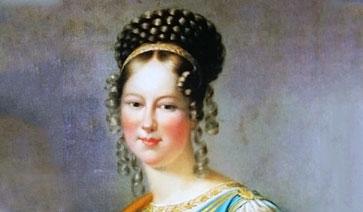
Mária Antónia
Princess of Saxe-Coburg and Gotha (Koháry), Duchess of Saxony (since 1826)
(Buda, 2 July 1797 – Vienna, 25 September 1862)
Mária Antónia was the only daughter of Ferenc József, Count Koháry, and his wife, Countess Maria Antoinetta Josefa of Waldstein-Wartenburg. Mária’s brother Anton died at the age of two in 1795, leaving her the sole heir to the family’s vast fortune, including the exclusive Palais Koháry in Vienna. In 1815 Mária married Ferdinand of Saxe-Coburg and Gotha, a marriage that would have been unequal, if the Emperor had not given her father the title of Prince Koháry. Mária’s husband was determined to tear down the Palais Koháry, and he built the Palais Coburg in its place between 1840 and 1845. Today the Palais is a luxury hotel.
Mária Antónia Koháry
Princess of Koháry of Csábrág and Szitnya (since 1815)
Princess of Saxe-Coburg-Saalfeld (Koháry), Duchess of Saxony (since 1815)
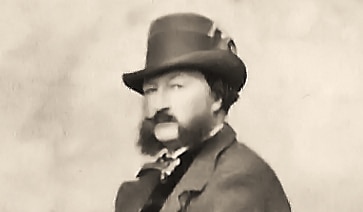
August Ludwig Viktor
Prince of Saxe-Coburg and Gotha (Koháry), Duke of Saxony (since 1826)
2(Vienna, Austria, 13 June 1818 – Ebenthal Castle, Austria, 26 July 1881)
August Ludwig Viktor of Saxe-Coburg-Saalfeld was the second son of Prince Ferdinand of Saxe-Coburg-Saalfeld and Princess Mária Antónia Koháry, the daughter of Ferenc József, Prince Koháry of Csábrág and Szitnya. On the death of her father in 1826, Mária inherited his estates in Slovakia and Hungary. In 1843, August married Princess Clémentine of Orléans, daughter of Louis-Philippe I, King of the French, and Maria Amalia of the Two Sicilies. August and Clémentine lived in the Palais Coburg in Vienna. Their son Ferdinand became Tsar Ferdinand I of Bulgaria. When Prince August’s mother died in 1862, he became one of the largest landowners in Hungary. When he became father-in-law of Louise of Belgium, the sister of Stéphanie, Crown Princess of Austria, Emperor Franz Joseph I of Austria entitled him with the style Highness. August sponsored the erection of the Catholic church “Saint Augustin” in protestant Coburg, where he and his family were laid to rest in a crypt.
Prince of Saxe-Coburg-Saalfeld, Duke of Saxony
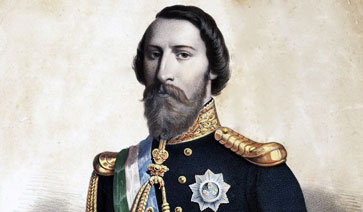
Ferdinand
Titular King of Portugal and the Algarves (since 1853)
1(Vienna, 29 October 1816 – Lisbon, 15 December 1885)
Ferdinand (Ferdinand August Franz Anton) married the widowed Maria II, who had been Queen of Portugal since 1826. The marriage was arranged by his uncle, King Léopold of the Belgians. Maria became Queen at the age of seven, but her uncle Miguel was regent and wanted the crown for himself. Maria’s father gave up the crown of Brazil in order to fight against his brother, and by 1834 Maria regained the crown. Although she was the Queen Regnant, she and Ferdinand faced her political and social challenges together. Ferdinand played an important part in Portuguese history, reigning during his wife’s pregnancies and as a Regent for his minor son Pedro until 1855. While giving birth to their eleventh child, Maria and the child died. Fourteen years later Ferdinand refused the offer to ascend the throne of Spain. He later remarried to Elisa Hensler, an actress, who was made Countess of Edla by Ernst II, Duke of Saxe-Coburg and Gotha, a cousin of Ferdinand.
Dom Fernando II King of Portugal and the Algarves (since 1837)
Royal Consort of Portugal (1836 – 1837)
Prince of Saxe-Coburg-Saalfeld (Koháry), Duke of Saxony
Prince of Saxe-Coburg and Gotha (Koháry), Duke of Saxony (since 1826)
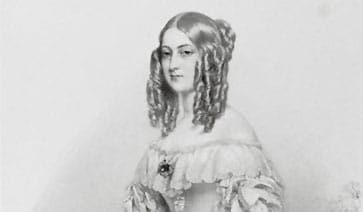
Victoria
Duchess of Nemours (since 1840)
3(Vienna, 14 February 1822 – Claremont House, England, 10 December 1857)
Victoria (Victoria Franziska Antonia Juliane Luise) was the daughter of Prince Ferdinand of Saxe-Coburg and Gotha and Maria Antonia Koháry de Csábrág. In 1840 she married Louis d’Orléans, the Duke of Nemours. She inherited the paternal estates in Slovakia and Hungary when her father died in 1851. Victoria died shortly after the birth of her daughter Blanche.
Princess of Saxe-Coburg-Saalfeld, Duchess of Saxony
Princess of Saxe-Coburg and Gotha (Koháry), Duchess of Saxony (since 1826)
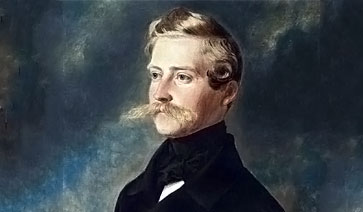
Leopold Franz Julius
Prince of Saxe-Coburg and Gotha (Koháry), Duke of Saxony (since 1826)
4
(Vienna, 31 January 1824 – Vienna, 20 May 1884)
Leopold Franz Julius was the youngest son of Prince Ferdinand of Saxe-Coburg and Gotha and Mária Antónia Koháry de Csábrág. As it was unlikely he would succeed to the crown, he took on a military position in the Austrian Army, where he later became a Major General. Leopold was a potential husband for Isabel II of Spain. Spain had been the scene of Great Power rivalry since 1815 and all the Great Powers exerted their influence by supporting different candidates. Because the Saxe-Coburg family was perceived as closely linked to British interests, the other European powers would not tolerate such a union. Leopold therefore married Constanze Geiger, a singer and actress, who was made Freifrau von Ruttenstein by Leopold’s uncle Ernst II, Duke of Saxe-Coburg and Gotha. The marriage was considered unequal and their son unacknowledged.
Prince of Saxe-Coburg-Saalfeld (Koháry), Duke of Saxony
August Louis Viktor
Prince of Saxe-Coburg and Gotha (Koháry)

August Ludwig Viktor
Prince of Saxe-Coburg and Gotha (Koháry), Duke of Saxony (since 1826)
2(Vienna, Austria, 13 June 1818 – Ebenthal Castle, Austria, 26 July 1881)
August Ludwig Viktor of Saxe-Coburg-Saalfeld was the second son of Prince Ferdinand of Saxe-Coburg-Saalfeld and Princess Mária Antónia Koháry, the daughter of Ferenc József, Prince Koháry of Csábrág and Szitnya. On the death of her father in 1826, Mária inherited his estates in Slovakia and Hungary. In 1843, August married Princess Clémentine of Orléans, daughter of Louis-Philippe I, King of the French, and Maria Amalia of the Two Sicilies. August and Clémentine lived in the Palais Coburg in Vienna. Their son Ferdinand became Tsar Ferdinand I of Bulgaria. When Prince August’s mother died in 1862, August became one of the largest landowners in Hungary. When he became father-in-law of Louise of Belgium, the sister of Stéphanie, Crown Princess of Austria, Emperor Franz Joseph I of Austria gave him the title of Highness. August sponsored the erection of the Catholic church “Saint Augustin” in protestant Coburg, where he and his family were laid to rest in a crypt.
Prince of Saxe-Coburg-Saalfeld, Duke of Saxony
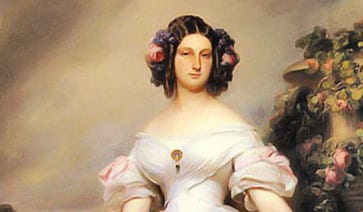
Clémentine
Princess of Saxe-Coburg and Gotha (Koháry), Duchess of Saxony (since 1843)
(Neuilly-sur-Seine, Ile-de-France, Kingdom of the French, 6 March 1817 – Vienna, 16 February 1907)
Clémentine (Marie Clémentine Léopoldine Caroline Clotilde) was a Princess of the Royal Family of the Bourbons, the second daughter of Louis-Philippe I, King of the French, and a very beautiful young woman. In 1843, the marriage of Clémentine and August was arranged through the intercession of August’s uncle, King Léopold I of the Belgians. The couple lived in France until the French Revolution forced them to flee the country. They had five children. Their youngest son Ferdinand was Clémentine’s favourite. She insisted on giving him the best possible education, since she intended him to be a royal head of country. She accompanied him to Bulgaria, where he became Prince of Bulgaria in 1887 and was installed as Tsar in 1908 a year after her death. She donated much of her fortune to charities and social projects in Bulgaria, including financing their railway line.
Mademoiselle de Beaujolais
Princess of Orléans (since 1830)
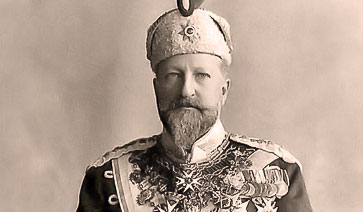
Ferdinand
Ferdinand I, Tsar of Bulgaria (since 1908)
5(Vienna, 26 February 1861 – Coburg, 10 September 1948)
Ferdinand (Ferdinand Maximilian Karl Leopold Maria), officer in the Austro-Hungarian army, was elected Prince Regnant of Bulgaria in 1887 when his predecessor Alexander of Battenberg resigned after a reign of only seven years. At the time, Bulgaria was under Ottoman sovereignty. In 1893, Ferdinand entered a marriage of convenience with Marie Louise Princess of Bourbon-Parma, daughter of Robert I, Duke of Parma and Maria Pia of Bourbon-Two Sicilies. The couple had three children, then Marie Louise died in January 1899 while giving birth to their fourth child. To ensure that his children had a mother, Ferdinand married Eleonore Reuss of Köstritz (1860 – 1917) in 1908. Bulgaria was then independent and Ferdinand declared himself Tsar or King of Bulgaria. When Tsar Ferdinand I renounced his rights to rule Bulgaria in 1918 on behalf of his oldest son Boris, he went to Coburg, where he spent the next thirty years. He cultivated his interests in bird watching, ornithology, and botany. On trips to Egypt and Sudan he found many birds which he imported for his aviaries.
Prince of Bulgaria (since 1887)
Prince of Saxe-Coburg and Gotha (Koháry), Duke of Saxony
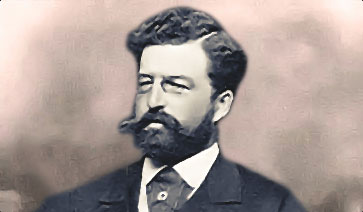
Philipp
Prince of Saxe-Coburg and Gotha (Koháry), Duke of Saxony
1(Palais des Tuileries, Paris, 28 March 1844 – Coburg, 3 July 1921)
Philipp (Ferdinand Philipp Maria August Raphael) was the oldest son of August and Clémentine of Saxe-Coburg and Gotha (Koháry). In 1870 he became a Major in the Hungarian army, and in 1875, he married his second cousin Louise, Princess of Belgium, the daughter of Léopold II, King of the Belgians. The couple had two children, but Louise left her husband in 1896. Philipp was a close confidant to his brother-in-law, Crown Prince Rudolf. In 1889, he, a friend, and a valet discovered the bodies of Rudolf and his mistress Baroness Mary Vetsera, who had been shot. Philipp was especially interested in collecting coins from Saxony, the East, and overseas and published writings on Oriental numismatics. He spent his last years at the Bürglass-Schlösschen in Coburg. He was buried in the Koháry crypt in St. Augustin Church in Coburg, next to his parents.
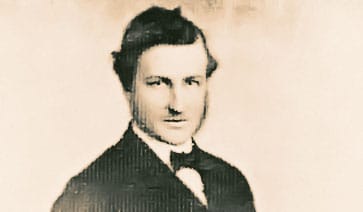
Ludwig August
Prince of Saxe-Coburg and Gotha (Koháry), Duke of Saxony
2(Château d’Eu, Normandy, France, 8 August 1845 – Karlsbad, Germany, 14 September 1907)
Ludwig August (Ludwig August Maria Eudes) was known in Brazil as Dom Luís Augusto. He was an imperial Brazilian Admiral. Emperor Pedro II wanted to marry his two daughters, Isabel and Leopoldina, so Ludwig and his French cousin Gaston, Comte d’Eu, the son of August’s Aunt Victoria, were sent to Brazil. The sisters made their choices with their father’s approval. Leopoldina chose Ludwig August and they were married in Rio de Janeiro on 15 December 1864. They had four sons.
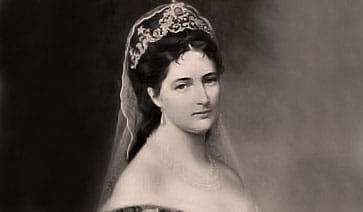
Clotilde
Princess Imperial & Archduchess of Austria, Princess Royal of Hungary and Bohemia (since 1864)
3(Neuilly-sur-Seine, Île-de-France, Kingdom of the French 8 July 1846 – Alcsút, Hungary 3 June 1927)
Clotilde (Marie Adelheid Amalie Clotilde) became an Archduchess of Austria through her marriage to Archduke Joseph Karl of Austria, a member of the Hungarian part of Habsburg-Lorraine. The marriage was celebrated in Coburg in 1864. Her husband began his military career as a Major General and ended as a General of the Cavalry. He was deeply interested in the country and language of Hungary and published several books on the subject. The couple had seven children.
Princess of Saxe-Coburg and Gotha (Koháry), Duchess of Saxony
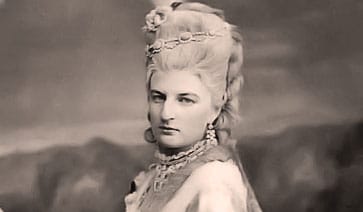
Amalie
Duchess in Bavaria (since 1875)
4(Coburg, 23 October 1848 – Schloss Biederstein, Munich, 6 May 1894)
Amalie (Marie Luise Franziska Amalie) was the fourth child and second oldest daughter of Prince August of Saxe-Coburg and Gotha (Koháry) and his wife Princess Clémentine of Orléans. Originally she was chosen to be the bride of Prince Leopold of Bavaria. But Elisabeth of Bavaria, Empress of Austria, knew about the love her brother Maximilian had for Amalie. So she arranged for Leopold to meet her daughter Gisela, convincing him that the match would be looked upon as a favor to the Emperor. The idea of becoming the son-in-law of the Austrian Emperor was appealing to Leopold, and he and Gisela were engaged a few days later. Amalie then married Maximilian Emanuel, Duke in Bavaria in Ebenthal Castle, Lower Austria in 1875.
Princess of Saxe-Coburg and Gotha (Koháry), Duchess of Saxony
Ferdinand I
Tsar of Bulgaria

Ferdinand
Ferdinand I, Tsar of Bulgaria (since 1908)
5(Vienna, 26 February 1861 – Coburg, 10 September 1948)
Ferdinand (Ferdinand Maximilian Karl Leopold Maria), officer in the Austro-Hungarian army, was elected Prince Regnant of Bulgaria in 1887 when his predecessor Alexander of Battenberg resigned after a reign of only seven years. At the time, Bulgaria was under Ottoman sovereignty. In 1893, Ferdinand entered a marriage of convenience with Marie Louise Princess of Bourbon-Parma, daughter of Robert I, Duke of Parma and Maria Pia of Bourbon-Two Sicilies. The couple had three children, then Marie Louise died in January 1899 while giving birth to their fourth child. To ensure that his children had a mother, Ferdinand married Eleonore Reuss of Köstritz (1860 – 1917) in 1908. Bulgaria was then independent and Ferdinand declared himself Tsar or King of Bulgaria. When Tsar Ferdinand I renounced his rights to rule Bulgaria in 1918 on behalf of his oldest son Boris, he went to Coburg, where he spent the next thirty years. He cultivated his interests in bird watching, ornithology, and botany. On trips to Egypt and Sudan he found many birds, which he imported for his aviaries.
Prince of Bulgaria (since 1887)
Prince of Saxe-Coburg and Gotha (Koháry), Duke of Saxony
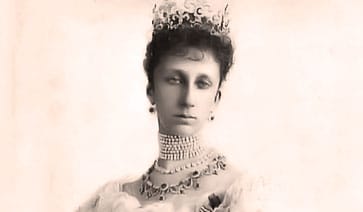
Maria Luisa
Princess of Bulgaria (since 1893)
1(Rome, Italy, 17 January 1870 – Sofia, Bulgaria, 31 January 1899)
Maria Louisa (Marie Louisa Pia Teresa Anna Ferdinanda Francesca Antonietta Margherita Giuseppina Carolina Bianca Lucia Apollonia) was born in Rome in 1870, the oldest daughter of Robert I, Duke of Parma and his first wife, Maria Pia Princess of Bourbon-Two Sicilies. Maria Louisa was only twelve when she lost her mother. She was very talented, spoke several languages, and liked painting and music. In 1892, her father arranged her marriage to Ferdinand, the reigning Prince of Bulgaria. She fulfilled her task as a mother and died at the age of 29 years, having given birth to four children.
Princess of Bourbon-Parma
Issue:
Tsar Boris III
Kyril, Prince of Preslav
Princess Eudoxia
Princess Nadezhda
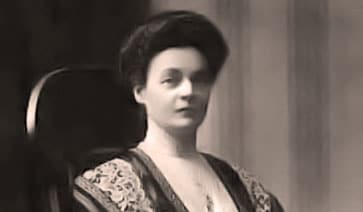
Eleonore
Tsaritsa of Bulgaria
2(Trzebiechów (Trebschen), Poland, 22 August 1860 – Euxinograd, Bulgaria, 12 September 1917)
Eleonore (Eleonore Caroline Gasparine Louise) and Ferdinand of Bulgaria celebrated their marriage in Coburg in 1908. She performed her duties as consort to a head of state and as step-mother to the children of her husband. She was a very altruistic and compassionate woman, working as a nurse during World War I.
Princess Reuss of Köstritz
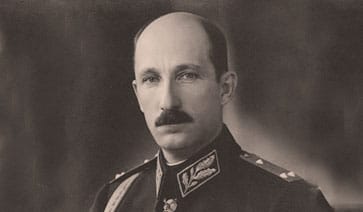
Boris
Boris III, Tsar of Bulgaria (since 1918)
1(Sofia, Principality of Bulgaria, 30 January 1894 – Sofia, Kingdom of Bulgaria, 28 August 1943)
Boris (Boris Clement Robert Mary Pius Louis Stanislaus Xavier) received a demanding education and pursued a military career. In order to reconcile with Russia, his father had him converted to Russian Orthodox Church in 1896 and chose Tsar Nicholas II of Russia as godfather for Boris. In 1918 Boris was promoted to the rank of Major General and succeeded his father on the Bulgarian throne. In 1930 he married Giovanna, the daughter of Victor Emmanuel III of Italy. They had two children, a daughter and a son. Given the fact that in World War I Bulgaria lost three important territories, Boris associated with the Nazi regime, but even under political pressure, Boris refused to join his allies in the war against the Soviet Union or to deport Bulgarian Jews to concentration camps. King Boris III died at 49, in 1943, two weeks after a meeting with Hitler on those topics. Rumours spread about the King having been poisoned.
Prince of Bulgaria
Prince of Saxe-Coburg and Gotha (Koháry), Duke of Saxony
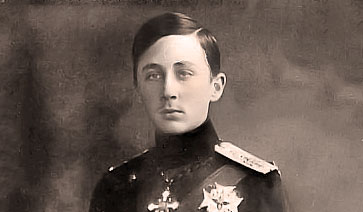
Kyril
Prince Regent of Bulgaria (since 1943)
2(Sofia, Principality of Bulgaria, 17 November 1895 – Sophia, Bulgaria, 1 February 1945)
Kyril (Kyril Heinrich Franz Ludwig Anton Karl Philipp) was the younger brother of King Boris III of Bulgaria. After the death of his brother, he became Prince Regent of Bulgaria, as Boris’ son was only 6 years old. But during those times of war, the Soviet Union declared war on Bulgaria and occupied the country. With the support of the communist regime in Moscow, former exiled communists and their sympathizers seized power in 1944. Boris’ son, Simeon, his mother and sister had the chance to leave the country, whereas Kyril and other cabinet members were sentenced to death in 1945.
Prince of Bulgaria
Prince of Saxe-Coburg and Gotha (Koháry), Duke of Saxony
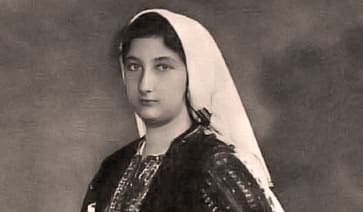
Eudoxia
Princess of Bulgaria
3(Sofia, Principality of Bulgaria (5 January 1898 – Friedrichshafen, Germany, 4 October 1985)
Eudoxia (Eudoxia Augusta Philippine Clementine Maria) devoted her life to her country and acted as first lady of the land until King Boris III married Princess Giovanna of Savoy. After the Communists took over, was able to leave the country and went to Germany to be close to her younger sister, Duchess Albrecht of Wurttemberg.
Princess of Saxe-Coburg and Gotha (Koháry), Duchess of Saxony
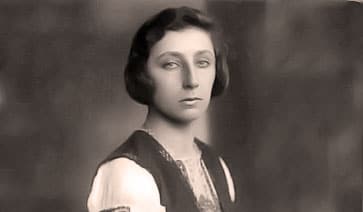
Nadezhda
Duchess Albrecht of Wurttemberg
4(Sofia, Principality of Bulgaria, 30 January 1899 – Stuttgart, Germany, 15 February 1958)
Nadezhda (Nadezhda Klementine Maria Pia Majella), was the youngest daughter of the Bulgarian Royals. Her mother, Marie Louise, died a day after her birth. She was married in 1924 at Bad Mergentheim, Germany to Duke Albrecht Eugen of Württemberg, the second son of Albrecht, Duke of Württemberg. They had five children.
Princess of Bulgaria
Princess of Saxe-Coburg and Gotha (Koháry), Duchess of Saxony
Boris III
Tsar of Bulgaria

Boris
Boris III, Tsar of Bulgaria (since 1918)
1(Sofia, Principality of Bulgaria, 30 January 1894 – Sofia, Kingdom of Bulgaria, 28 August 1943)
Boris (Boris Clement Robert Mary Pius Louis Stanislaus Xavier) received a demanding education and pursued a military career. In order to reconcile with Russia, his father had him converted to Russian Orthodox Church in 1896 and chose Tsar Nicholas II of Russia as godfather for Boris. In 1918 Boris was promoted to the rank of Major General and succeeded his father on the Bulgarian throne. In 1930 he married Giovanna, the daughter of Victor Emmanuel III of Italy. They had two children, a daughter and a son. Given the fact that in World War I Bulgaria lost three important territories, Boris associated with the Nazi regime, but even under political pressure, Boris refused to join his allies in the war against the Soviet Union or to deport Bulgarian Jews to concentration camps. King Boris III died at 49, in 1943, two weeks after a meeting with Hitler on those topics. Rumours spread about the King having been poisoned.
Prince of Bulgaria
Prince of Saxe-Coburg and Gotha (Koháry), Duke of Saxony
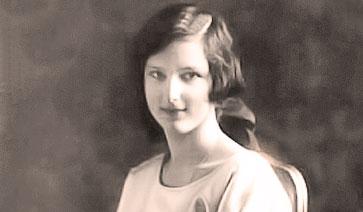
Giovanna
Tsaritsa Ioanna of Bulgaria (since 1930)
(Rome, Italy, 13 November 1907 – Estoril, Portugal, 26 February 2000)
Giovanna (Giovanna Elisabetta Antonia Romana Maria) was the third daughter of King Victor Emmanuel III of Italy and his wife Elena of Montenegro. Her brother was the future King Umberto II of Italy. She was very involved with charities and is said to have helped Jewish families escape to Argentina by providing transit visas. When the new Communists gave the family 48 hours to leave the country, Tsaritsa Giovanna took her children to Alexandria, Egypt to be with her father. In 1951, they moved to Madrid, Spain. Eleven years later, in 1962, she moved to Estoril, Portugal.
Princess of Savoy
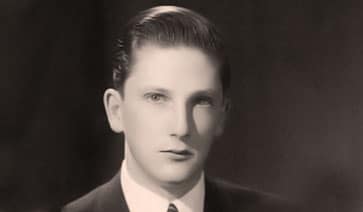
Simeon
Tsar Simeon II of the Bulgarians (since 1946)
2(Sofia, Kingdom of Bulgaria, 16 June 1937)
Simeon (Borisov) was still a minor when his father died, so his uncle Kyril was responsible for ruling the country. But Kyril was executed under Communist rule. After a referendum in favour of a republic, the royal family had to leave the country. In Alexandria, Egypt Simeon attended school till 1951 when his family moved to Madrid, Spain, where he studied law and business sciences. In 1962, Simeon married a Spanish aristocrat, Doña Margarita Gómez-Acebo y Cejuela. The couple has four sons and a daughter. After 55 years in exile, Simeon Borisov Saxe-Coburg and Gotha announced his return to Bulgaria to form a new political party in 2001. His political promise was to improve the quality of life of the Bulgarian people. He became Prime Minister by means of elections and took an oath to protect the country’s republican Constitution. His political career ended in 2005.
The Prince of Turnovo (until 1943)
Prince of Saxe-Coburg and Gotha (Koháry), Duke of Saxony
Simeon II Tsar of Bulgaria (1943 – 1946)
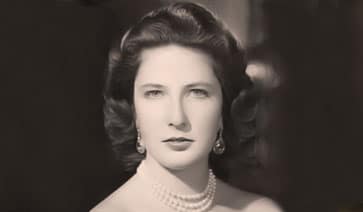
Maria Louise
Princess of Bulgaria
1(Sofia, Kingdom of Bulgaria, 13 January 1933)
Maria Louise is the older sister of Simeon II of Bulgaria. She married Karl Prince of Leiningen, a great-great-grandson of Queen Victoria and Alexander II of Russia. The couple met in Madrid, Spain and lived in Canada, where they had two sons. They divorced in 1968. One year later Marie Louise married Bronislaw Tomasz Andrzej Chrobok. The couple currently lives in New Jersey, in the United States, and they have a daughter, Alexandra and a son, Pawel.
Princess of Saxe-Coburg and Gotha (Koháry), Duchess of Saxony
Simeon II Tsar of the Bulgarians
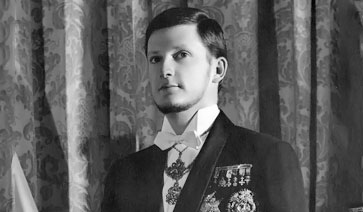
Simeon
Tsar Simeon II of the Bulgarians (since 1946)
2(Sofia, Kingdom of Bulgaria, 16 June 1937)
Simeon (Borisov) was still a minor when his father died, so his uncle Kyril was responsible for ruling the country. But Kyril was executed under Communist rule. After a referendum in favour of a republic, the royal family had to leave the country. In Alexandria, Egypt Simeon attended school till 1951 when his family moved to Madrid, Spain, where he studied law and business sciences. In 1962, Simeon married a Spanish aristocrat, Doña Margarita Gómez-Acebo y Cejuela. The couple has four sons and a daughter. After 55 years in exile, Simeon Borisov Saxe-Coburg and Gotha announced his return to Bulgaria to form a new political party in 2001. His political promise was to improve the quality of life of the Bulgarian people. He became Prime Minister by means of elections and took an oath to protect the country’s republican Constitution. His political career ended in 2005.
The Prince of Turnovo (until 1943)
Prince of Saxe-Coburg and Gotha (Koháry), Duke of Saxony
Simeon II Tsar of Bulgaria (1943 – 1946)
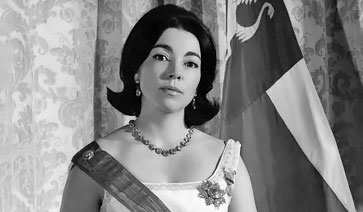
Margarita
Tsaritsa of the Bulgarians (since 1962)
(Madrid, 6 January 1935)
Doña Margarita (Gómez-Acebo y Cejuela) was the daughter of Don Manuel Gómez-Acebo y Modet, of the Marquesses de Cortina, and his wife Doña María de las Mercedes Cejuela y Fernández, and paternal granddaughter of the 3rd Marqués of Cortina. Her parents were murdered by the Spanish Republicans in 1936 at the beginning of the Spanish Civil War. Margarita married Simeon II Tsar of Bulgaria in 1962. The Tsar and his wife are residing in a former hunting lodge from the beginning of the 20ieth century. The Vrana Palace near Sofia, where his family used to live, is supposed to be given to the public. Simeon and Margarita have five children.
Doña Margarita Gómez-Acebo y Cejuela (1935–1962)
Princess of Saxe-Coburg and Gotha (Koháry), Duchess of Saxony (since 1962)

Kardam
Prince of Turnovo, Prince of Bulgaria
1(Madrid, 2 December 1962 – Madrid, 7 April 2015)
Kardam is the oldest son of Tsar Simeon II of Bulgaria and his wife Doña Margarita Gómez-Acebo y Cejuela. He is sometimes styled as a crown prince but is also known as Kardam of Bulgaria and Kardam of Turnovo, the latter being the title of the heir apparent to the Bulgarian throne. In Madrid, Spain in 1996, Kardam married Doña Miriam de Ungría y López, born in Madrid, Spain on 2 September 1963. She is a gemologist and historian, daughter of Don Bernardo de Ungría y Goiburu, Honorary President of the Colegio Heráldico de España y de las Indias, and his wife, Doña María Del Carmen López y Oleaga, both of Basque descent. They have two sons who are second and third in line of succession to the now-defunct Bulgarian throne. Kardam and his wife were in a serious car accident in 2008. Prince Kardam died of a lung infection in hospital in Madrid on 7 April 2015, aged 52.
Prince of Saxe-Coburg and Gotha (Koháry), Duke of Saxony
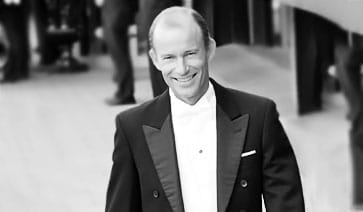
Kyril
Prince of Preslav, Prince of Bulgaria
2(Madrid, 11 July 1964)
Kyril is the second son of the exiled Tsar’s family. The title Prince of Preslav represents the title for the second son of Bulgarian monarchs and is a reminder of the ancient capital of the First Bulgarian Empire, today a national archaeological reserve. Kyril graduated from Princeton University in 1986 with a bachelor’s degree in physics. In 1989, he married Doña María del Rosario Nadal y Fuster de Puigdórfila, a daughter of industrialist Miguel Nadal y Bestard and Isabel Fuster de Puigdórfila y Villalonga, sister of the 10th and daughter of the 9th Counts of Olocau, both of Catalán descent. They have three children, all born in London.
Prince of Saxe-Coburg and Gotha (Koháry), Duke of Saxony
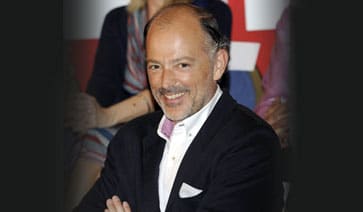
Kubrat
Prince of Panagyurishte, Prince of Bulgaria
3(Madrid, 5 November 1965)
Kubrat studied medicine and surgery at the University of Navarra in Pamplona, Spain between 1984 and 1990. He works as a physician (Dr. Kubrat Sajonia-Coburgo) and specializes in proctology. In September 2003, he became Head of the Colorectal Unit at the Hospital Quirón San Camilo in Madrid, where he has been Director of the Team Care Management Unit since June 2006. In 1993 Kubrat married Doña Carla María de la Soledad Royo-Villanova y Urrestarazu, daughter of Jaime Royo-Villanova y Paya and his wife María del Carmen Urrestarazu y Ozueta. They have three sons. Kubrat’s title refers to a historical settlement of the Middle Ages – a town that resisted Ottoman rule in Bulgaria in 1876.
Prince of Saxe-Coburg and Gotha (Koháry), Duke of Saxony

Konstantin-Assen
Prince of Vidin, Prince of Bulgaria
4
(Madrid, 5 December 1967)
Konstantin-Assen is the youngest son of Tsar Simeon II of Bulgaria. His title Prince of Vidin is the title of the fourth son of Bulgarian kings. Vidin is a Danube port in the far northwestern part of Bulgaria, a historical site going back to Celtic times. It is said to be the only preserved medieval fortress of Bulgaria. Konstantin-Assen studied business sciences in Spain and got a Master’s degree from Columbia University in the United States. Currently he is the Rothschild Bank Director for Spain. In 1994 Konstantin-Assen married Doña María García de la Rasilla y Gortázar, daughter of Álvaro García de la Rasilla y Pineda and his wife María de Gortázar e Ybarra, daughter of Manuel María de Gortázar y Landecho, 9th Count of Superunda. They have twins, a son and a daughter.
Prince of Saxe-Coburg and Gotha (Koháry), Duke of Saxony
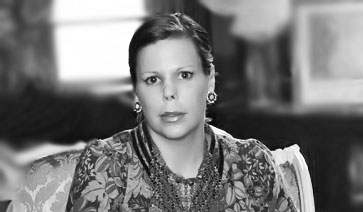
Kalina
Princess of Bulgaria
5(Madrid, 19 January 1972)
Kalina is the youngest child and only daughter of exiled Tsar Simeon II of Bulgaria. She attended the French Lycée (secondary education) in Madrid, Spain and speaks several languages. In 2002 she married Antonio “Kitín” Muñoz y Valcárcel, a noted Spanish humanitarian. With his expeditions he seeks to spread his message of peace, multiculturalism, and respect for indigenous cultures around the world. The couple lives in Morocco near Rabat with their son, Simeon.
Princess of Saxe-Coburg and Gotha (Koháry), Duchess of Saxony
Kardam
Prince of Turnovo

Kardam
Prince of Turnovo, Prince of Bulgaria
1(Madrid, 2 December 1962)
Kardam is the oldest son of Tsar Simeon II of Bulgaria and his wife Doña Margarita Gómez-Acebo y Cejuela. He is sometimes styled as a crown prince but is also known as Kardam of Bulgaria and Kardam of Turnovo, the latter being the title of the heir apparent to the Bulgarian throne. In Madrid, Spain in 1996, Kardam married Doña Miriam de Ungría y López, born in Madrid, Spain on 2 September 1963. She is a gemologist and historian, daughter of Don Bernardo de Ungría y Goiburu, Honorary President of the Colegio Heráldico de España y de las Indias, and his wife, Doña María Del Carmen López y Oleaga, both of Basque descent. They have two sons who are second and third in line of succession to the now-defunct Bulgarian throne. Kardam and his wife were in a serious car accident in 2008. Prince Kardam died of a lung infection in hospital in Madrid on 7 April 2015, aged 52.
Prince of Saxe-Coburg and Gotha (Koháry), Duke of Saxony

Miriam
Princess of Bulgaria (since 1996)
(Madrid, 2 September 1963)
Miriam is the daughter of don Bernardo de Ungría y Goiburu, Honorary President of the Colegio Heráldico de España y de las Indias, and his wife, doña María del Carmen López y Oleaga, both of Basque descent. She was born in Madrid, Spain on 2 September 1963 and is a gemologist and historian. Miriam married Kardam in 1996 in Madrid. Their two sons are second and third in the line of succession to the now-defunct Bulgarian throne.
Miriam de Ungria y Lopez

Boris
Boris Prince Turnovski of Bulgaria
1(Madrid, 12 October 1997)
Boris is the first son of Kardam, Prince of Turnovo and a grandson of Tsar Simeon II of Bulgaria. He is second in the line of succession to the Bulgarian throne.
Prince of Saxe-Coburg and Gotha (Koháry), Duke of Saxony
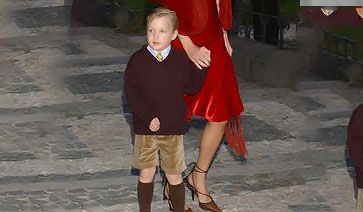
Beltrán
Beltrán Prince Turnovski of Bulgaria
2(Madrid, 23 March 1999)
Beltran is the second son of Kardam, Prince of Turnovo and a grandson of Tsar Simeon II of Bulgaria. He is third in the line of succession to the Bulgarian throne.
Prince of Saxe-Coburg and Gotha (Koháry), Duke of Saxony


